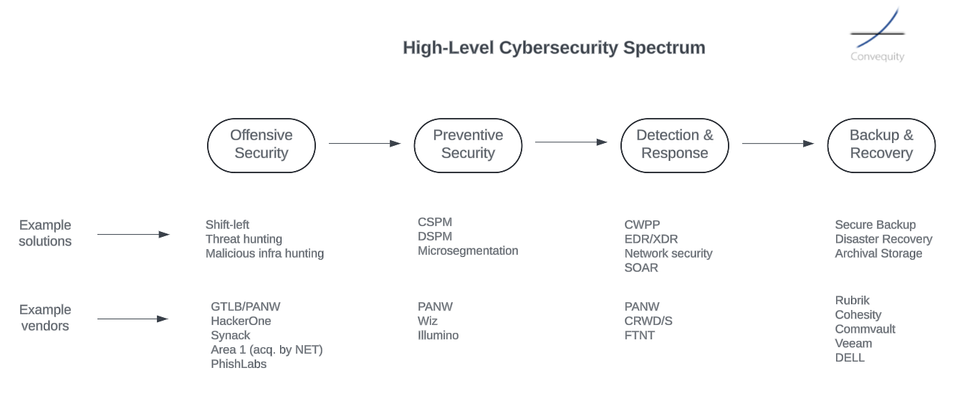Arm IPO - Tough Situations, Priced To Perfection (Pt.4)

Summary
- Chiplet technology presents an exciting opportunity for ARM, potentially paving the way for its strategic evolution.
- The high costs of designing cutting-edge chips pose challenges for many players in the semiconductor industry.
- ARM's potential venture into providing pre-designed CPU dies could redefine its position in the semiconductor ecosystem.
Chiplet and UCIe, a wild card for ARM
The landscape of semiconductor manufacturing and design has been dominated by traditional monolithic approaches. However, as we delve deeper into the nuances of chip design, particularly in the realm of cutting-edge nodes, we realize that the conventional models are not only becoming increasingly expensive but also less efficient in the face of the ever-evolving demands of modern technology. This is where the chiplet paradigm presents an exciting opportunity, potentially paving the way for ARM's strategic evolution.
Cost Implications in the Semiconductor World
When we dissect the financial dynamics of creating chips using cutting-edge nodes (like the 3nm), the staggering costs become evident. With estimates exceeding $500 million for the complete design and manufacturing process, it's not merely the IP or the CPU IP costs that are burdensome. The substantial costs underscore the challenge for many players, especially smaller ones, in the industry.
ARM's Historic Positioning
ARM's strategy has historically revolved around positioning itself upstream in the semiconductor value chain, but not too high, like RISC-V. This meant that while it provided significant value, it also necessitated its clients to engage in extensive downstream work. ARM's model, offering Architectural License Agreements (ALA), and then moving to Technology License Agreements (TLA) for clients less capable of intricate design, has been a masterstroke, allowing it to tap into a broad spectrum of the market without direct competition with chip manufacturers.
The Dawn of the Chiplet Era
Chiplet technology, in essence, disrupts the traditional semiconductor framework. Instead of creating a monolithic SoC (System on Chip), components like CPU, GPU, and DSP can be fabricated separately and later interconnected. This modular approach promises several transformative advantages:
- Efficiency & Speed: As mentioned in Part 3, ARM has expanded from ALA, to TLA, and more recently to verification. Though, in the future ARM could go one step further and actually provide the finished CPU design, competing directly with fabless chipmakers. By offering a finished CPU die, SoC manufacturers can expedite the design-to-manufacture process. Instead of engaging in the intricate CPU verification, they can procure ARM's CPU die, integrate it with their custom IPs, and focus on the final SoC tape-out phase.
- Cost Savings: If ARM shoulders the brunt of the initial costs by crafting a universal CPU die, it obviates the need for every individual chip-maker to reinvent the wheel. This means not only immense cost savings but also democratizing access to state-of-the-art chip technology.
- Strategic Expansion for ARM: ARM's potential venture into providing pre-designed CPU dies doesn't merely represent a new revenue stream; it can redefine its position in the semiconductor ecosystem. By absorbing the hefty upfront design and manufacturing expenses, ARM could position itself as an indispensable ally for SoC makers, especially the smaller players who otherwise would be priced out of the cutting-edge node market.
Accelerating Development Cycles
The introduction of chiplets, modular components that can be independently manufactured and later assembled, has the potential to drastically reduce development timelines. ARM's potential foray into supplying pre-fabricated CPU dies is a step towards optimizing this process. The impact on the time-to-market cannot be understated: by supplying finished CPU dies to its customers, ARM might not just be streamlining its own processes but also enabling its clients to cut down on crucial design and development phases, potentially shaving off several months from a typical 18-month cycle. This agility can translate into faster product iterations and quicker responses to market demands.
Navigating the Economic Landscape
However, this transition isn't without its challenges. The decision to move further down the value chain and provide not just IP but tangible CPU components could be perceived as ARM encroaching on its clients' territory. Such moves can sometimes strain partnerships, particularly if clients feel that ARM might be overshadowing their contributions to the end product.
But economics might compel a change in mindset. The costs associated with designing and fabricating cutting-edge chips are soaring. As we march towards the 3nm era and beyond, the R&D and production costs are expected to touch unprecedented figures, potentially crossing the $500m mark. This might be a burden too heavy for most vendors, especially those operating on slimmer margins or smaller scales.
For companies like MediaTek, the financial implications are worth pondering. If ARM provides a ready-to-integrate CPU die, MediaTek can diversify its offerings without incurring the enormous costs of designing two distinct CPUs. Consider this scenario: MediaTek aims to cater to two market segments - office workers requiring basic functionalities and gamers demanding high performance. If MediaTek opts to design two unique SoCs from scratch, the combined costs could be staggering. But with ARM's CPU die, they can focus their energies on differentiating other aspects of the SoC, like the GPU, thereby achieving cost efficiencies.
The trajectory of the semiconductor industry is pointing towards more specialization and modularization. The chiplet paradigm might still be in its infancy, but its potential to revolutionize chip design and manufacturing is evident. However, companies must tread cautiously. The economic benefits are tantalizing, but the shifts in industry dynamics, partnerships, and client relationships will require careful navigation. As ARM contemplates this transition, its decisions will reverberate across the industry, potentially setting the stage for the next era of semiconductor innovation.
The Basics of Chiplet Architecture and Its Power Quandary
At its core, the chiplet approach is designed to simplify and modularize chip production. Instead of crafting a single, monolithic die where every component is integrated, chiplets allow for smaller, discrete components to be manufactured individually. These chiplets, each potentially specializing in a function like processing or graphics, are later interconnected on a package substrate.
However, this modular design comes with its challenges, especially in the realm of power efficiency. AMD, with its chiplet-based designs for certain CPUs, faces a notable power consumption issue during idle states. The power draw during these idle periods can exceed 10 watts, a figure that's substantially higher than the peak power consumption of many mobile chips. The reason? The nature of chiplet design.
Every time a specific function or component of a SoC is activated, the chiplet design requires the activation of a larger, central die that serves as a communication hub for all the individual chiplets. Think of it like turning on an entire office building's lights just to use one room. This is contrary to monolithic designs where each component can be directly powered as needed without activating a large central hub.
Why Aren't Mobile Manufacturers Onboard?
Given this power efficiency concern, it's understandable why chiplet designs haven't been embraced universally, especially in domains where power efficiency is paramount. Mobile devices, for instance, prioritize battery longevity. Even minor inefficiencies in power consumption can translate to significant reductions in battery life, impacting user experience. This is why, despite the many potential benefits of chiplet designs like cost savings and design flexibility, mobile manufacturers remain wary.
Similarly, embedded systems, often deployed in scenarios where consistent power sources might be a challenge or where long-term operation without maintenance is needed, would be ill-suited for chiplet designs in their current state.
AMD's Strategy
While AMD has indeed adopted chiplets for some of its server and desktop CPUs, it recognizes the limitations of the design. In applications like gaming consoles and laptops, where power efficiency can be as crucial as performance, AMD still leans towards monolithic designs. These designs, while potentially more challenging and expensive to manufacture, offer the power efficiency required for these platforms.
Summing up the Chiplet Quandary
The semiconductor industry is in a state of constant evolution, with manufacturers ever in search of the right balance between performance, power efficiency, and production cost. While chiplet designs offer tantalizing advantages, especially in terms of flexibility and scalability, their current power consumption challenges make them less than ideal for certain applications. Only time will tell if technological advancements can mitigate these issues, opening the door for broader chiplet adoption across a wider range of devices.




